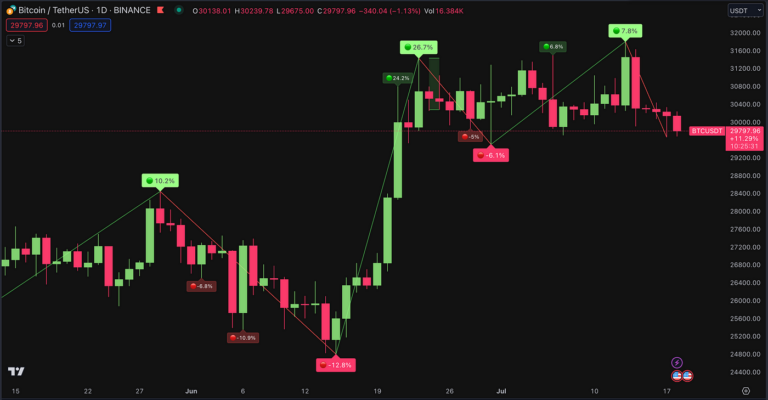How to Get into Trading Stocks & Making Profits

For those wishing to learn more about the financial markets and possibly make money, trading stocks can be exhilarating and rewarding if you have the right methods and frame of mind. However, it’s crucial to approach stock trading with knowledge, self-control, and a clear strategy. This article will take you step-by-step through the process of beginning stock trading, covering important topics including stock market fundamentals, choosing the best brokerage, creating a trading strategy, comprehending trading styles, risk management, and increasing your likelihood of success.
Steps To Get Into Trading Stocks & Make Profit
- Understanding the Stock Market
“For those considering retirement planning, it’s essential to explore the best asset allocation for retirement investing, which can significantly impact long-term financial goals. You can find valuable insights on this topic at Vector Vest.”
Before you begin your journey into stock trading, it’s essential to learn the basics of the stock market. Familiarize yourself with different investment strategies, technical and fundamental analysis, as well as risk management. There are plenty of online resources, books, and courses that can help you understand how the stock market works. Additionally, monitoring significant market participants, such as institutional investors and hedge funds, might reveal information about market sentiment and potential business prospects.
Consider exploring educational programs offered by prop trading firms, as they offer specialized training and insights into the financial markets. Building a strong understanding of these concepts will lay the groundwork for your trading endeavors and potential success.
- Educate Yourself about Trading Strategies
Different techniques are used in stock trading to suit varied risk appetites and timeframes. Swing trading involves maintaining holdings for a few days to a few weeks, whereas day trading involves buying and selling stocks on the same day. Position trading entails maintaining positions for a long time, ranging from weeks to years.
It is crucial to thoroughly investigate and comprehend different tactics to choose the one that best suits your financial objectives and personality. Finding the strategy that matches your risk appetite and desired market participation level is essential because each strategy has benefits and drawbacks.
- Develop a Trading Plan
A well-organized trading plan acts as a road map for your trading endeavors. Start by establishing specific, long and short-term financial goals. Establish your risk tolerance level and the amount of funds you are willing to invest in trading.
Include explicit guidelines for entry and exit points in your plan based on your preferred trading technique and technical or fundamental research. Impulsive judgments and emotional biases can be avoided by using predetermined criteria to determine when to enter (buy) and exit (sell) a trade.
- Choose the Right Brokerage Platform
A smooth and effective trading experience depends on choosing the correct brokerage platform. Look for platforms that provide real-time market data, user-friendly interfaces, and reasonable commission fees. The platform should give users access to numerous stock markets and provide necessary resources for fundamental and technical research.
Consider the platform’s research and educational resources, as these can enhance your trading knowledge and skills. Additionally, ensure the platform provides reliable customer support and efficient order execution. Choosing the right brokerage platform can significantly impact your trading experience, enabling you to execute trades efficiently and access essential tools and market insights, ultimately increasing your potential for profitable trading outcomes.
- Technical and Fundamental Analysis
It is crucial to comprehend both technical and fundamental analysis to make wise trading judgments. Technical analysis examines many factors like price patterns, charts, and indicators to forecast future price movements. Trades can be made at advantageous times by studying past pricing information, volume, and trends.
On the other hand, the fundamental analysis assesses a company’s financial health, performance, and competitive position. Insights can be gained regarding a company’s long-term prospects by examining elements such as earnings reports, revenue growth, debt levels, and industry trends.
- Risk Management
Trading is inherently risky. Therefore, managing that risk well is essential to safeguarding your money and preventing losses. Position sizing, which defines how much money should be invested in each transaction, is a crucial risk management strategy. You can protect yourself from severe losses by not betting much of your cash on one deal.
The use of stop-loss orders is an additional essential risk management strategy. Limiting potential losses, a stop-loss order instantly closes a trade if the stock price swings against your position. You can maintain emotional control and discipline during market turbulence by implementing these risk management strategies.
Conclusion
A thorough knowledge of the stock market, successful trading tactics, and a clearly defined trading strategy are necessary for trading stocks and turning a profit. Your chances of succeeding in the stock market can be considerably increased by becoming knowledgeable about the basics of the market, developing your analytical abilities, and putting good risk management strategies into practice.
Remember that trading requires ongoing learning and modification. Continue to be persistent, patient, and methodical in your approach. To attain your financial goals in the dynamic world of stock trading, you must learn from your triumphs and failures and never stop modifying your techniques.




